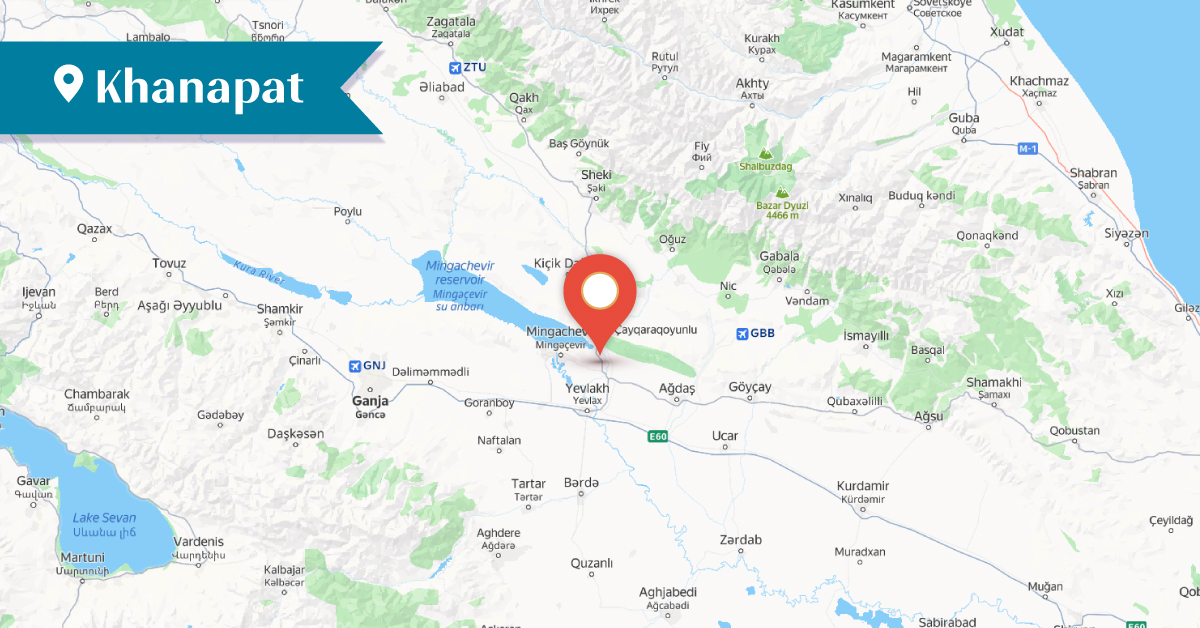2025
2025
2025-10-13

The Armenian village of Khanapat was located in the Aresh district of the Elizavetpol governorate, approximately 29.4 km northwest of Aghdash. Historically, the district’s territories had been part of Aluank and were known as Kaghadash. The village was also known as Khanabad, Khanavat, or Khanavad.[1] Nearby, there was a Turkic-inhabited village of the same name, whose residents attacked Khanapat on November 28, 1905, during the Armenian-Tatar clashes.
The origins of Khanapat’s inhabitants are not definitively known. One account suggests they were indigenous to the area, while another indicates they may have settled here from the Khanapat village of Khachen and the Khaldan village of Aresh.
In 1841, the village comprised 11 houses with 61 Armenian residents, decreasing slightly to 9 houses and 62 residents by 1851. By 1888, there were 40 Armenian households with roughly 197 residents, and in 1901, the population had grown to 243. By 1908, Khanapat’s population reached 255, increasing to 298 by 1914.
The village suffered significantly during the Armenian-Tatar clashes. The summer of 1918 was catastrophic, as Ottoman forces and allied Turkic-Tatar gangs destroyed the district’s Armenian settlements.
Khanapat had a church, mentioned in 1841 as Surb Gevorg and later, in 1893, as Surb Astvatsatsin (Holy Mother of God). It is likely that the church was rebuilt and reconsecrated as Surb Astvatsatsin sometime between 1841 and 1893.
Prominent spiritual leaders of Khanapat included Astvatsatur Biniatyan, Arakel Bayanduryants[2], and Grigor Ter-Arakelyan Kostandyants. [3]
Bibliography
Letters of a Traveler, Vol. B, ‘Nor-Dar’, 1889, No. 207, December 14, p. 2.
Lusents, A. Gh., The Aresh Dialect, Yerevan, 1982, 271 pages.
[1] Today, the village is called Khanabad
[2] He was ordained as a priest in 1859 and is mentioned until 1893.
[3] He was born in 1868 and served as a priest from December 7, 1899, until 1912.